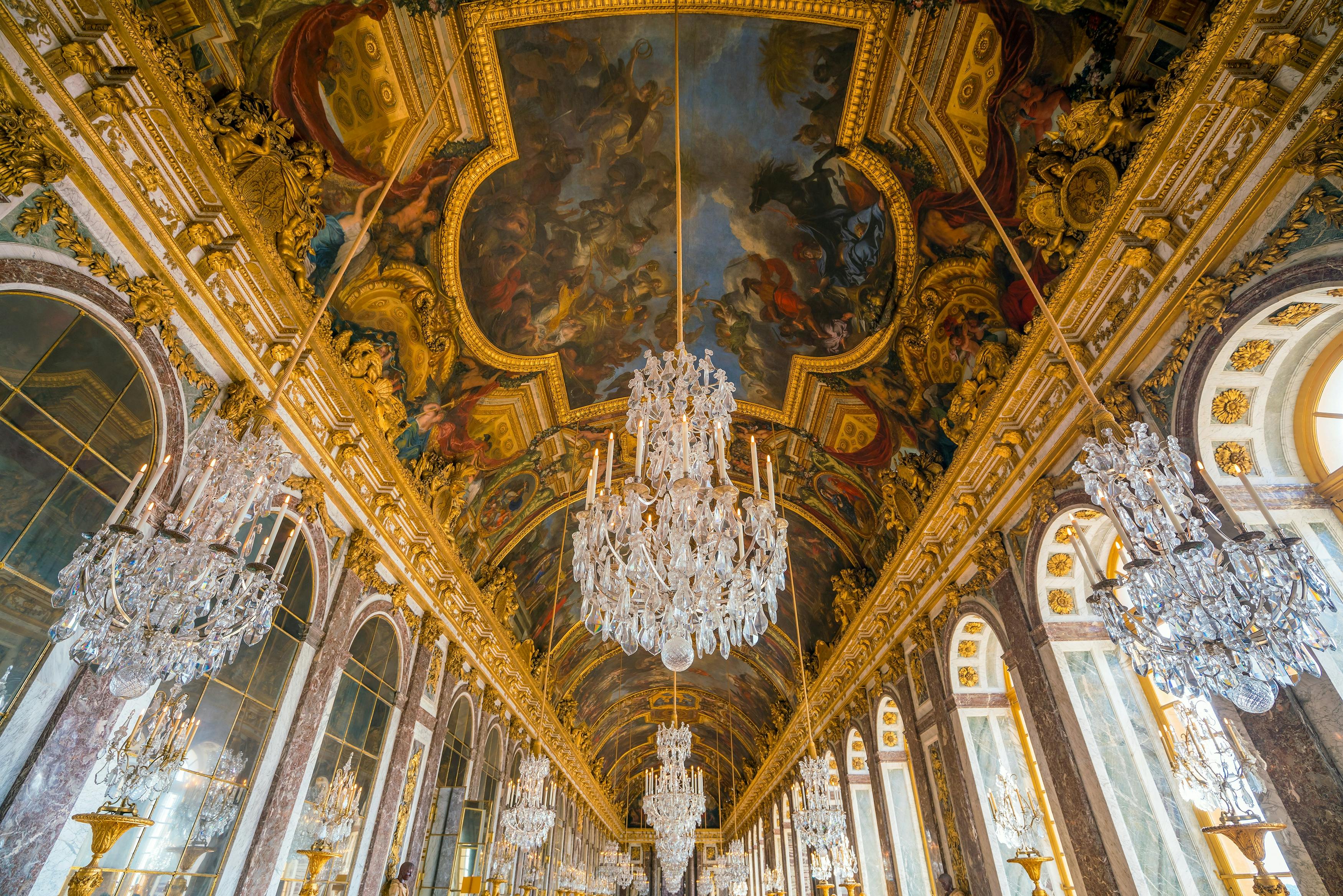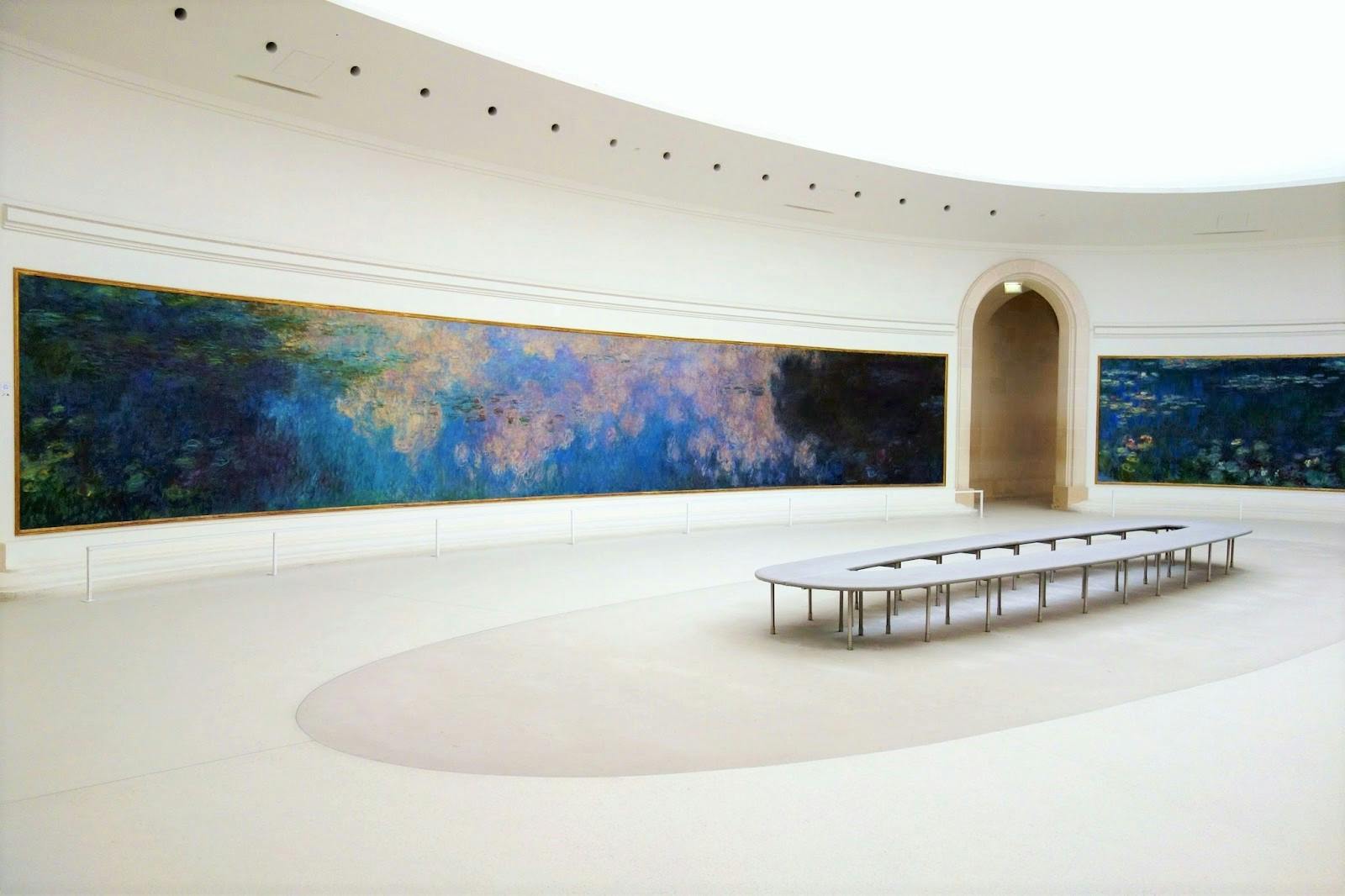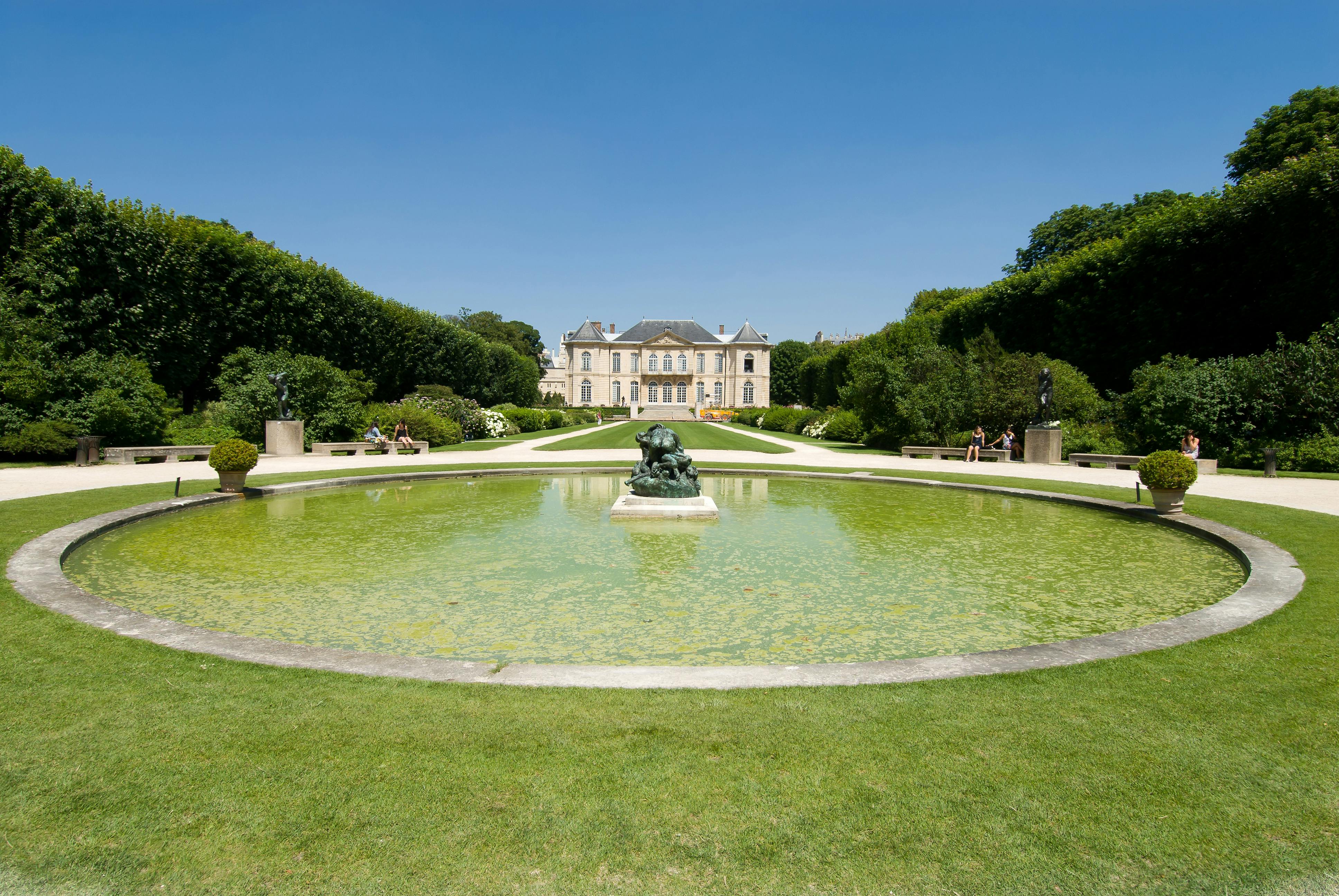 Париж - Франция
Париж - Франция
Лувр
Читать далее
Лувр событий
-
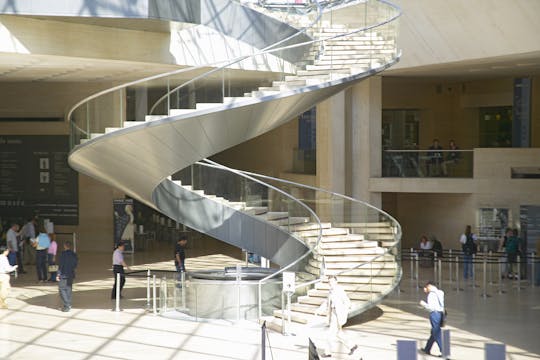 Достопримечательности и экскурсиИндивидуальная экскурсия в музей ЛуврОткройте для себя мир сокровищ на очереди экскурсия в музей Лувр в Париже.Продолжительность: 2 часE-VoucherБесплатное аннулирование5 382,62 TL «Поскольку
Достопримечательности и экскурсиИндивидуальная экскурсия в музей ЛуврОткройте для себя мир сокровищ на очереди экскурсия в музей Лувр в Париже.Продолжительность: 2 часE-VoucherБесплатное аннулирование5 382,62 TL «Поскольку -
 Достопримечательности и экскурсиЭкскурсия с гидом по Парижскому ЛувруУзнайте все об Экскурсии по Парижскому Лувру с гидом и заранее забронируйте билеты по официальным тарифам, без очереди! Узнайте, спланируйте, забронируйте и отправляйтесь в путешествие c Мusement!Продолжительность: 2 час30 минутаE-VoucherБесплатное аннулирование2 834,84 TL «Поскольку
Достопримечательности и экскурсиЭкскурсия с гидом по Парижскому ЛувруУзнайте все об Экскурсии по Парижскому Лувру с гидом и заранее забронируйте билеты по официальным тарифам, без очереди! Узнайте, спланируйте, забронируйте и отправляйтесь в путешествие c Мusement!Продолжительность: 2 час30 минутаE-VoucherБесплатное аннулирование2 834,84 TL «Поскольку -
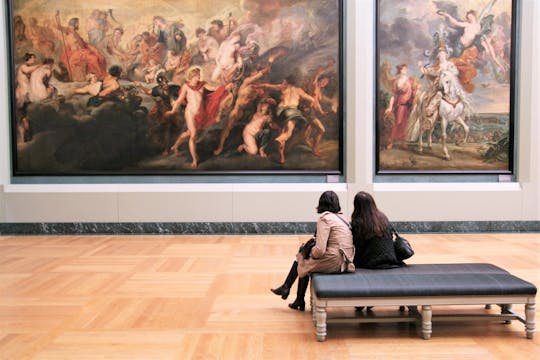 Достопримечательности и экскурсиПосещение Лувра и билет на круизПолучите билет в Лувр и 1-часовой круиз по реке Сена.Продолжительность: 2 час30 минутаE-VoucherБесплатное аннулирование1 614,78 TL «Поскольку
Достопримечательности и экскурсиПосещение Лувра и билет на круизПолучите билет в Лувр и 1-часовой круиз по реке Сена.Продолжительность: 2 час30 минутаE-VoucherБесплатное аннулирование1 614,78 TL «Поскольку -
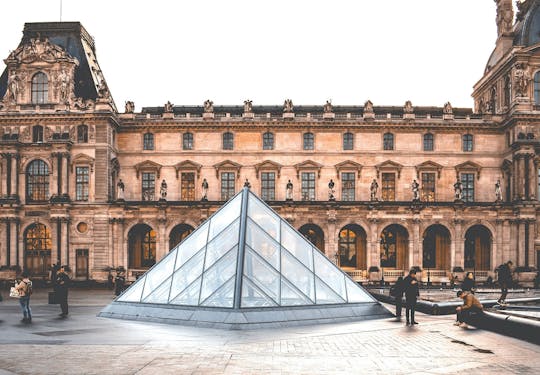 Достопримечательности и экскурсиПариж проходит мимо Go CityС помощью Paris Pass вы получите быстрый доступ к более чем 60 достопримечательностям, художественным галереям и памятникам Парижа, неограниченное количество поездок на метро и экскурсий по достопримечательностям.Продолжительность: переменнаяE-VoucherБесплатное аннулирование5 705,57 TL «Поскольку
Достопримечательности и экскурсиПариж проходит мимо Go CityС помощью Paris Pass вы получите быстрый доступ к более чем 60 достопримечательностям, художественным галереям и памятникам Парижа, неограниченное количество поездок на метро и экскурсий по достопримечательностям.Продолжительность: переменнаяE-VoucherБесплатное аннулирование5 705,57 TL «Поскольку -
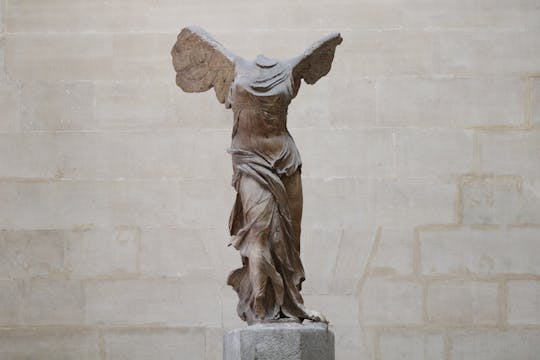 Достопримечательности и экскурсиLouvre Museum Masterpieces Guided Tour with Reserved AccessMake sure you don't miss anything at the Louvre with this guided tour of the greatest masterpieces and an express ticket to save you time.Продолжительность: 3 часE-VoucherБесплатное аннулирование2 942,50 TL «Поскольку
Достопримечательности и экскурсиLouvre Museum Masterpieces Guided Tour with Reserved AccessMake sure you don't miss anything at the Louvre with this guided tour of the greatest masterpieces and an express ticket to save you time.Продолжительность: 3 часE-VoucherБесплатное аннулирование2 942,50 TL «Поскольку -
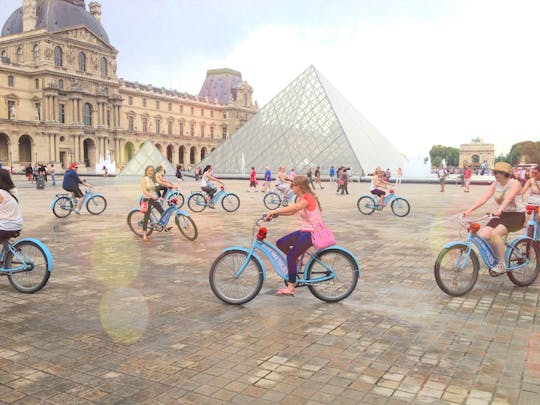 meropriyatiyaЛучшее в Париже экскурсии на велосипедеКупить ваш лучший Пари - велосипедная экскурсия на musement с нашими гарантию спички цены и безопасное бронирование. Получайте информацию, планируйте и бронируйте удивительные мероприятия в Париже.Продолжительность: 4 часE-VoucherБесплатное аннулирование1 614,78 TL «Поскольку
meropriyatiyaЛучшее в Париже экскурсии на велосипедеКупить ваш лучший Пари - велосипедная экскурсия на musement с нашими гарантию спички цены и безопасное бронирование. Получайте информацию, планируйте и бронируйте удивительные мероприятия в Париже.Продолжительность: 4 часE-VoucherБесплатное аннулирование1 614,78 TL «Поскольку -
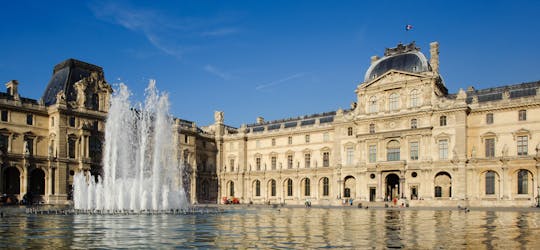 Достопримечательности и экскурсиВ малых группах Лувра экскурсияПолучите возможность внимательно полюбоваться шедеврами Лувра с помощью опытного гида!Продолжительность: 2 часE-VoucherБесплатное аннулирование3 193,68 TL «Поскольку
Достопримечательности и экскурсиВ малых группах Лувра экскурсияПолучите возможность внимательно полюбоваться шедеврами Лувра с помощью опытного гида!Продолжительность: 2 часE-VoucherБесплатное аннулирование3 193,68 TL «Поскольку -
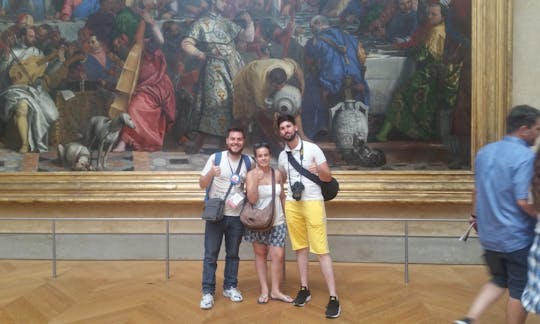 Достопримечательности и экскурсиЧастный тур итальянского искусства в музее ЛуврПолучить большую часть итальянского искусства с экскурсией по итальянской коллекции и больших шедевров Лувра!Продолжительность: 2 часE-VoucherБесплатное аннулирование3 139,86 TL «Поскольку
Достопримечательности и экскурсиЧастный тур итальянского искусства в музее ЛуврПолучить большую часть итальянского искусства с экскурсией по итальянской коллекции и больших шедевров Лувра!Продолжительность: 2 часE-VoucherБесплатное аннулирование3 139,86 TL «Поскольку -
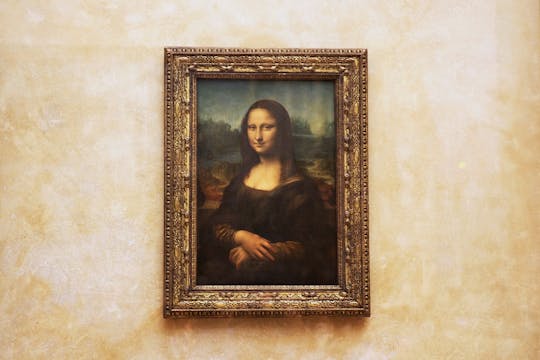 Достопримечательности и экскурсиНаедине с Моной Лизой, последняя запись Лувра турЗаказать экскурсию сокровища Лувра, следующие перевернутый маршрут, так что вы сохраните Мона Лиза, так же, как музей закрывается. и когда большинство посетителей уже покинуло...Продолжительность: переменнаяE-VoucherБесплатное аннулирование3 003,50 TL «Поскольку
Достопримечательности и экскурсиНаедине с Моной Лизой, последняя запись Лувра турЗаказать экскурсию сокровища Лувра, следующие перевернутый маршрут, так что вы сохраните Мона Лиза, так же, как музей закрывается. и когда большинство посетителей уже покинуло...Продолжительность: переменнаяE-VoucherБесплатное аннулирование3 003,50 TL «Поскольку -
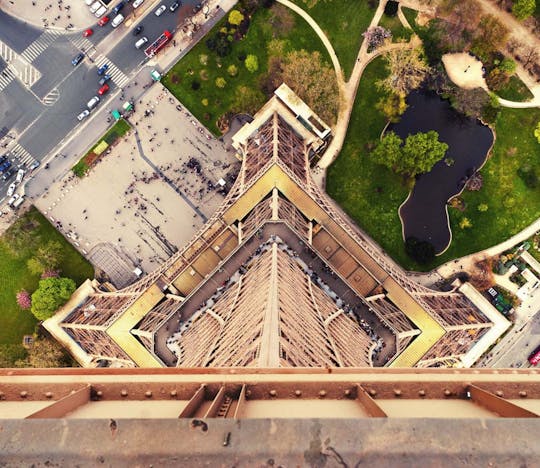 Достопримечательности и экскурсиЧастные фото экскурсия по ПарижуЭта 3-х часовая индивидуальная экскурсия по Парижу учит вас фотографии навыки, а также стимулирует ваше творчество и фотографического развития.Продолжительность: 3 часE-VoucherБесплатное аннулирование7 535,66 TL «Поскольку
Достопримечательности и экскурсиЧастные фото экскурсия по ПарижуЭта 3-х часовая индивидуальная экскурсия по Парижу учит вас фотографии навыки, а также стимулирует ваше творчество и фотографического развития.Продолжительность: 3 часE-VoucherБесплатное аннулирование7 535,66 TL «Поскольку -
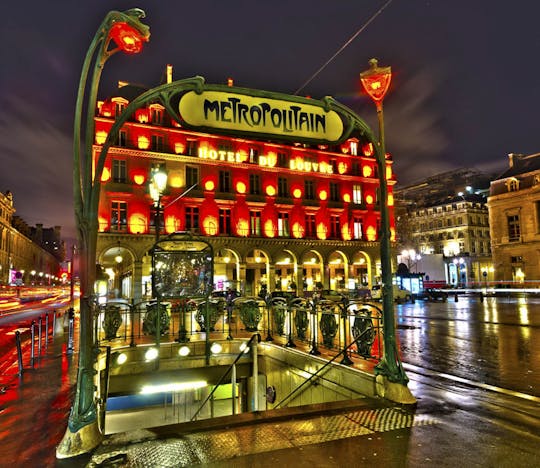 meropriyatiyaЧастная Париже фотография ночная экскурсияИсследуйте Город света после наступления темноты. Мастер длинных выдержках и захватить некоторые действительно замечательные виды на город.Продолжительность: 3 часE-VoucherБесплатное аннулирование7 535,66 TL «Поскольку
meropriyatiyaЧастная Париже фотография ночная экскурсияИсследуйте Город света после наступления темноты. Мастер длинных выдержках и захватить некоторые действительно замечательные виды на город.Продолжительность: 3 часE-VoucherБесплатное аннулирование7 535,66 TL «Поскольку -
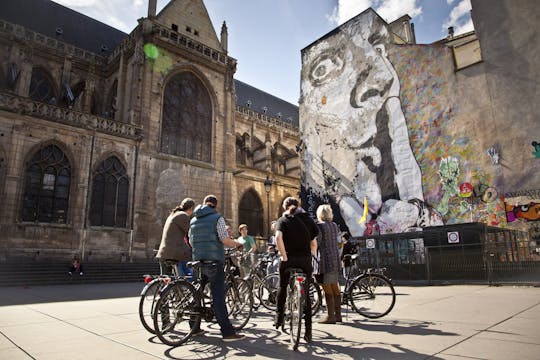 meropriyatiyaВелосипедный тур по историческому и современному ПарижуОткройте для себя исторический и современный Париж во время этой 3-часовой поездки на велосипеде по району Марэ, Иль-де-ла-Сите, Иль-Сен-Луи, Нотр-Дам, Лувр...Продолжительность: 3 часE-VoucherБесплатное аннулирование1 255,94 TL «Поскольку
meropriyatiyaВелосипедный тур по историческому и современному ПарижуОткройте для себя исторический и современный Париж во время этой 3-часовой поездки на велосипеде по району Марэ, Иль-де-ла-Сите, Иль-Сен-Луи, Нотр-Дам, Лувр...Продолжительность: 3 часE-VoucherБесплатное аннулирование1 255,94 TL «Поскольку -
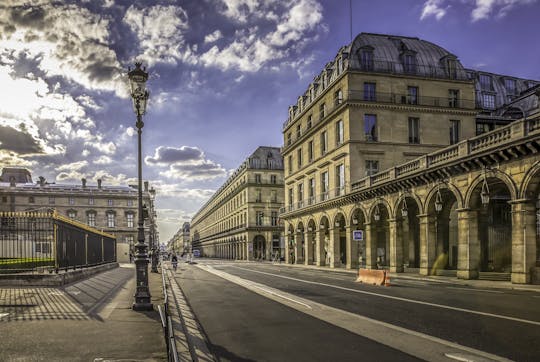 Достопримечательности и экскурсиИндивидуальная пешеходная экскурсия по правому берегу ПарижаЗабронировать 2-х часовую прогулку по правому берегу Парижа и ощутить различия между городом Средневековья и превратили Париж эпохи классицизма.Продолжительность: 2 часE-VoucherБесплатное аннулирование7 176,82 TL «Поскольку
Достопримечательности и экскурсиИндивидуальная пешеходная экскурсия по правому берегу ПарижаЗабронировать 2-х часовую прогулку по правому берегу Парижа и ощутить различия между городом Средневековья и превратили Париж эпохи классицизма.Продолжительность: 2 часE-VoucherБесплатное аннулирование7 176,82 TL «Поскольку -
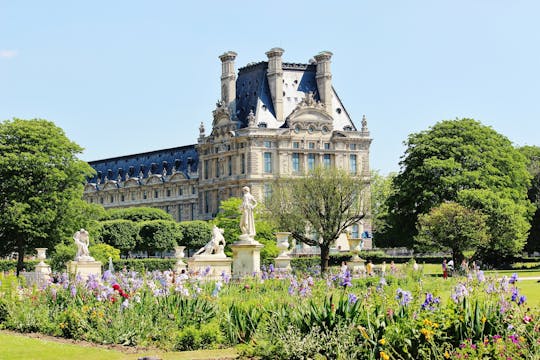 meropriyatiyaПале-Рояль и Крытые галереи: пешеходный аудиотурПрогуляйтесь по Пале-Роялю и узнайте его захватывающие истории, откройте для себя историю создания первого в мире торгового центра, прогуляйтесь по галерее Монпансье и загляните в ее роскошные бутики!Продолжительность: 1 часE-VoucherБесплатное аннулирование322,96 TL «Поскольку
meropriyatiyaПале-Рояль и Крытые галереи: пешеходный аудиотурПрогуляйтесь по Пале-Роялю и узнайте его захватывающие истории, откройте для себя историю создания первого в мире торгового центра, прогуляйтесь по галерее Монпансье и загляните в ее роскошные бутики!Продолжительность: 1 часE-VoucherБесплатное аннулирование322,96 TL «Поскольку -
 Достопримечательности и экскурсиParis Gourmet Food Tour and Louvre Museum Guided TourEnjoy a food tour and see the Louvre museum on this one day experience.Продолжительность: 7 часE-VoucherБесплатное аннулирование6 136,18 TL «Поскольку
Достопримечательности и экскурсиParis Gourmet Food Tour and Louvre Museum Guided TourEnjoy a food tour and see the Louvre museum on this one day experience.Продолжительность: 7 часE-VoucherБесплатное аннулирование6 136,18 TL «Поскольку -
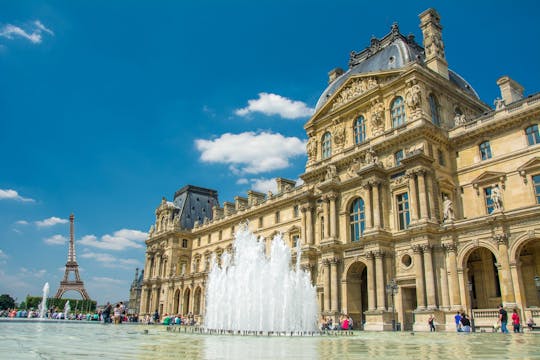 meropriyatiyaБез очереди в Лувр и круиз по реке СенаСоздать свой собственный идеальный день в Париже без очереди билет до Лувра и приятный способ познакомиться с городом огней во время 1-часовой круиз по реке.Продолжительность: переменнаяE-VoucherБесплатное аннулирование1 431,78 TL «Поскольку
meropriyatiyaБез очереди в Лувр и круиз по реке СенаСоздать свой собственный идеальный день в Париже без очереди билет до Лувра и приятный способ познакомиться с городом огней во время 1-часовой круиз по реке.Продолжительность: переменнаяE-VoucherБесплатное аннулирование1 431,78 TL «Поскольку -
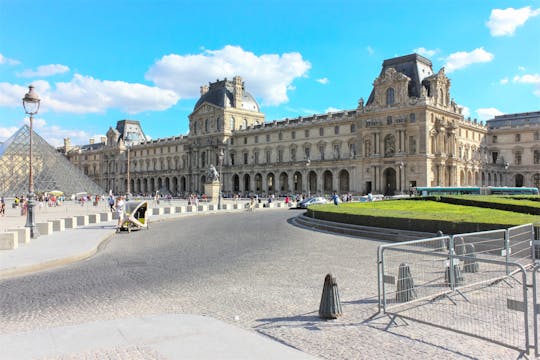 muzei i кhudozhestvennyie galereЭкскурсия для небольшой группы по величайшим шедеврам ЛувраЗакажите эту небольшую групповую экскурсию по Лувру и откройте для себя за 2 часа самые знаковые произведения искусства из одной из крупнейших художественных коллекций в мире!Продолжительность: 2 часE-VoucherБесплатное аннулирование3 767,83 TL «Поскольку
muzei i кhudozhestvennyie galereЭкскурсия для небольшой группы по величайшим шедеврам ЛувраЗакажите эту небольшую групповую экскурсию по Лувру и откройте для себя за 2 часа самые знаковые произведения искусства из одной из крупнейших художественных коллекций в мире!Продолжительность: 2 часE-VoucherБесплатное аннулирование3 767,83 TL «Поскольку -
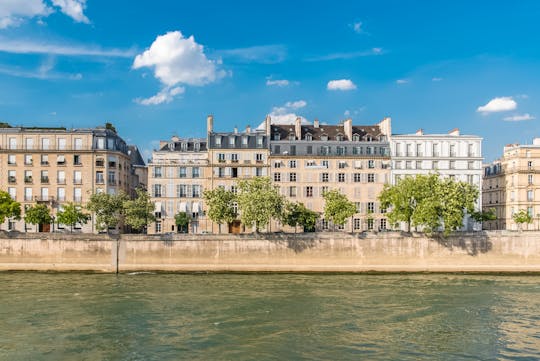 Достопримечательности и экскурсиИндивидуальная экскурсия в Лувр, Нотр-Дам и Сите и Сен-Луи островаЗабронировать этот 6-часовой частный тур для знакомства с Парижем знаковых достопримечательностей: Лувра, собора Нотр-Дам и Иль-де-ла-Сите.Продолжительность: 6 часE-VoucherБесплатное аннулирование10 218,00 TL «Поскольку
Достопримечательности и экскурсиИндивидуальная экскурсия в Лувр, Нотр-Дам и Сите и Сен-Луи островаЗабронировать этот 6-часовой частный тур для знакомства с Парижем знаковых достопримечательностей: Лувра, собора Нотр-Дам и Иль-де-ла-Сите.Продолжительность: 6 часE-VoucherБесплатное аннулирование10 218,00 TL «Поскольку -
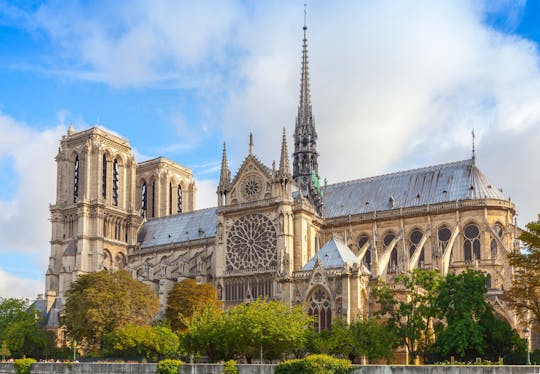 Gorodskiye meropriyatiyaGhosts of Paris: Mona Lisa Murder exploration game and self-guided tourPlay a haunted city game and go on a mysterious walking tour around Paris.Продолжительность: 1 часE-VoucherБесплатное аннулирование358,48 TL «Поскольку
Gorodskiye meropriyatiyaGhosts of Paris: Mona Lisa Murder exploration game and self-guided tourPlay a haunted city game and go on a mysterious walking tour around Paris.Продолжительность: 1 часE-VoucherБесплатное аннулирование358,48 TL «Поскольку -
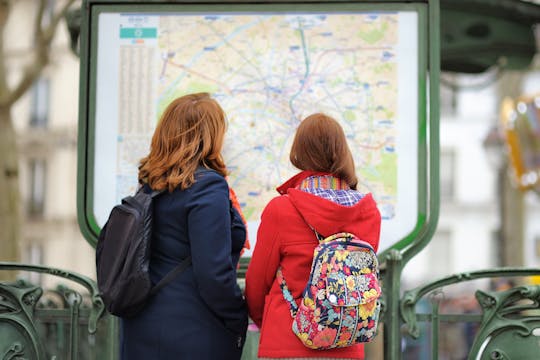 Достопримечательности и экскурсиМетро тур ориентация ПарижаНаучиться путешествовать в Париже как настоящий парижанин с этой 2-часовой метро ознакомительный тур в том числе 1-дневного Парижа на метро.Продолжительность: 2 часE-VoucherБесплатное аннулирование3 480,76 TL «Поскольку
Достопримечательности и экскурсиМетро тур ориентация ПарижаНаучиться путешествовать в Париже как настоящий парижанин с этой 2-часовой метро ознакомительный тур в том числе 1-дневного Парижа на метро.Продолжительность: 2 часE-VoucherБесплатное аннулирование3 480,76 TL «Поскольку -
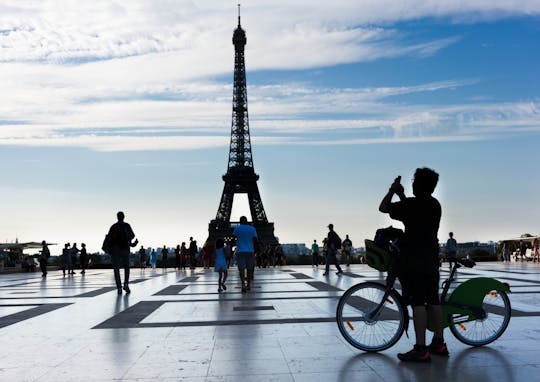 meropriyatiyaТур на велосипедах памятников ПарижаОпыт лучших парижских сайтах с этим 3,5-часовая экскурсия на велосипеде из самых знаменитых достопримечательностей города!Продолжительность: 3 час30 минутаE-VoucherБесплатное аннулирование1 614,78 TL «Поскольку
meropriyatiyaТур на велосипедах памятников ПарижаОпыт лучших парижских сайтах с этим 3,5-часовая экскурсия на велосипеде из самых знаменитых достопримечательностей города!Продолжительность: 3 час30 минутаE-VoucherБесплатное аннулирование1 614,78 TL «Поскольку -
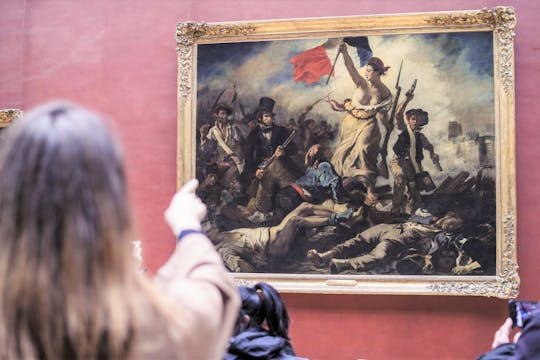 Достопримечательности и экскурсиОбзорная экскурсия Лувр в малых группахПолучить большинство из Лувра бронирование этой экскурсии в малых группах до 20 человек.Продолжительность: 2 часE-VoucherБесплатное аннулирование3 186,51 TL «Поскольку
Достопримечательности и экскурсиОбзорная экскурсия Лувр в малых группахПолучить большинство из Лувра бронирование этой экскурсии в малых группах до 20 человек.Продолжительность: 2 часE-VoucherБесплатное аннулирование3 186,51 TL «Поскольку -
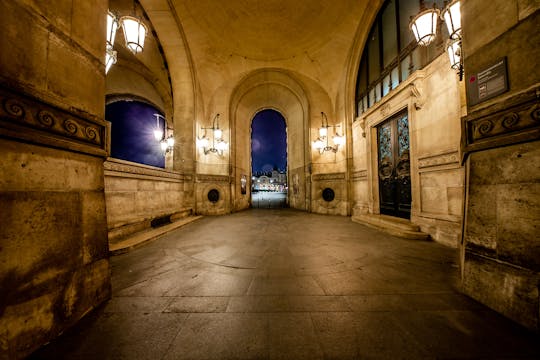 Достопримечательности и экскурсиУбийств и тайн экскурсия в музей ЛуврРаскрыть тайны Лувра с этой 2-часовой убийств и загадок экскурсии.Продолжительность: 2 часE-VoucherБесплатное аннулирование4 126,67 TL «Поскольку
Достопримечательности и экскурсиУбийств и тайн экскурсия в музей ЛуврРаскрыть тайны Лувра с этой 2-часовой убийств и загадок экскурсии.Продолжительность: 2 часE-VoucherБесплатное аннулирование4 126,67 TL «Поскольку -
 meropriyatiyaШоколад-мастерскую в ПарижеСоздать вкусный французский шоколад и конфеты с нуля, а это 1,5-часовая мастерская шоколада!Продолжительность: 1 час30 минутаE-VoucherБесплатное аннулирование3 050,15 TL «Поскольку
meropriyatiyaШоколад-мастерскую в ПарижеСоздать вкусный французский шоколад и конфеты с нуля, а это 1,5-часовая мастерская шоколада!Продолжительность: 1 час30 минутаE-VoucherБесплатное аннулирование3 050,15 TL «Поскольку -
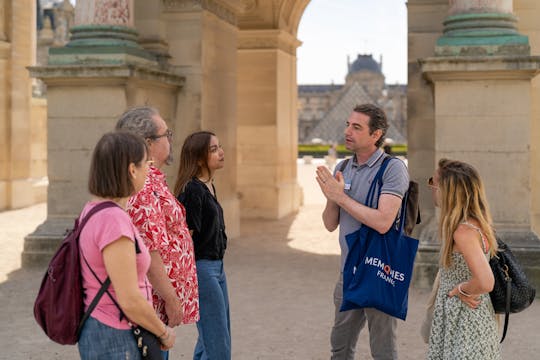 Достопримечательности и экскурсиПосетите обязательно видит Лувра в группе 6Присоединитесь к небольшой группе из 6 человек или меньше и опытный гид на 1,5 часа экскурсия по музею Лувра, и вы будете ориентироваться в крупнейшей в мире художественной коллекцией в удобной и запоминающейся форме.Продолжительность: переменнаяE-VoucherБесплатное аннулирование3 046,56 TL «Поскольку
Достопримечательности и экскурсиПосетите обязательно видит Лувра в группе 6Присоединитесь к небольшой группе из 6 человек или меньше и опытный гид на 1,5 часа экскурсия по музею Лувра, и вы будете ориентироваться в крупнейшей в мире художественной коллекцией в удобной и запоминающейся форме.Продолжительность: переменнаяE-VoucherБесплатное аннулирование3 046,56 TL «Поскольку -
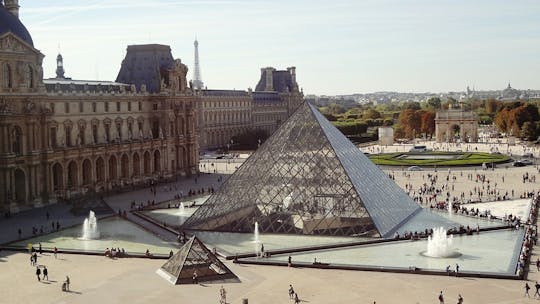 Достопримечательности и экскурсиSkip-the-Line Guided Tour of Louvre MuseumExperience the heart of Paris with a guided tour of the Louvre Museum. Skip-the-line tickets, expert commentary, and a curated selection of art and history await you.Продолжительность: 2 часE-VoucherБесплатное аннулирование2 834,84 TL «Поскольку
Достопримечательности и экскурсиSkip-the-Line Guided Tour of Louvre MuseumExperience the heart of Paris with a guided tour of the Louvre Museum. Skip-the-line tickets, expert commentary, and a curated selection of art and history await you.Продолжительность: 2 часE-VoucherБесплатное аннулирование2 834,84 TL «Поскольку -
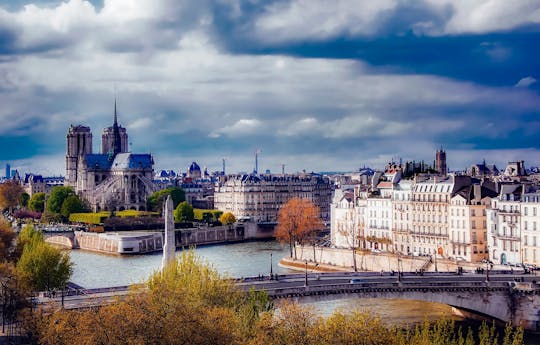 meropriyatiyaИндивидуальная индивидуальная однодневная поездка в Париж из ГавраЗабронируйте однодневную поездку в Париж и полностью настройте свой маршрут под руководством вашего профессионального гида.Продолжительность: 10 часE-VoucherБесплатное аннулирование43 060,92 TL «Поскольку
meropriyatiyaИндивидуальная индивидуальная однодневная поездка в Париж из ГавраЗабронируйте однодневную поездку в Париж и полностью настройте свой маршрут под руководством вашего профессионального гида.Продолжительность: 10 часE-VoucherБесплатное аннулирование43 060,92 TL «Поскольку -
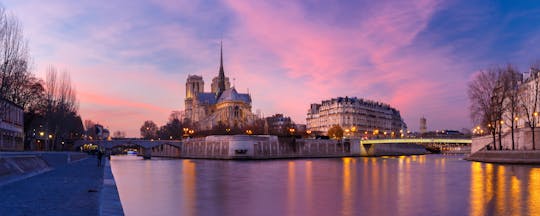 meropriyatiyaHappy hour cruise on the Seine riverBook this happy hour cruise to get magical views over the Louvre, Notre Dame de Paris and the Eiffel Tower at sunset over drinks!Продолжительность: 1 час30 минутаE-VoucherБесплатное аннулирование574,15 TL «Поскольку
meropriyatiyaHappy hour cruise on the Seine riverBook this happy hour cruise to get magical views over the Louvre, Notre Dame de Paris and the Eiffel Tower at sunset over drinks!Продолжительность: 1 час30 минутаE-VoucherБесплатное аннулирование574,15 TL «Поскольку -
 Достопримечательности и экскурсиИндивидуальная экскурсия в Лувр и ОрсэОткройте для себя два самых красивых музеев в мире с этим 6-часовая индивидуальная экскурсия в Лувр и музеи!Продолжительность: 6 часE-VoucherБесплатное аннулирование24 975,33 TL «Поскольку
Достопримечательности и экскурсиИндивидуальная экскурсия в Лувр и ОрсэОткройте для себя два самых красивых музеев в мире с этим 6-часовая индивидуальная экскурсия в Лувр и музеи!Продолжительность: 6 часE-VoucherБесплатное аннулирование24 975,33 TL «Поскольку -
 meropriyatiyaProfessional Photoshoot Outside the Louvre MuseumTake a professional photoshoot outside the Louvre Museum in Paris with an expert photographer and go home with unforgettable memories.Продолжительность: переменнаяE-VoucherБесплатное аннулирование1 614,78 TL «Поскольку
meropriyatiyaProfessional Photoshoot Outside the Louvre MuseumTake a professional photoshoot outside the Louvre Museum in Paris with an expert photographer and go home with unforgettable memories.Продолжительность: переменнаяE-VoucherБесплатное аннулирование1 614,78 TL «Поскольку -
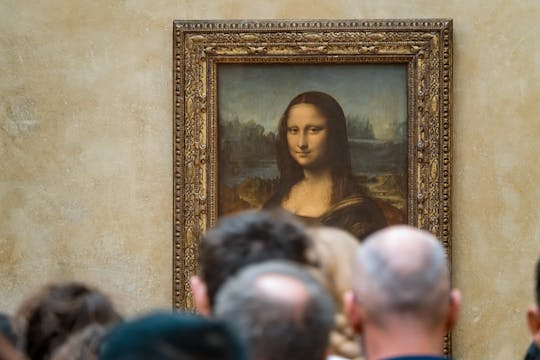 Достопримечательности и экскурсиУскоренный билет в Лувр с аудиотуром в мобильном приложенииИсследуйте Лувр в своем собственном темпе с помощью ускоренных билетов и аудио-экскурсии, доступной на вашем смартфоне!Продолжительность: 1 час30 минутаE-VoucherБесплатное аннулирование1 435,36 TL «Поскольку
Достопримечательности и экскурсиУскоренный билет в Лувр с аудиотуром в мобильном приложенииИсследуйте Лувр в своем собственном темпе с помощью ускоренных билетов и аудио-экскурсии, доступной на вашем смартфоне!Продолжительность: 1 час30 минутаE-VoucherБесплатное аннулирование1 435,36 TL «Поскольку -
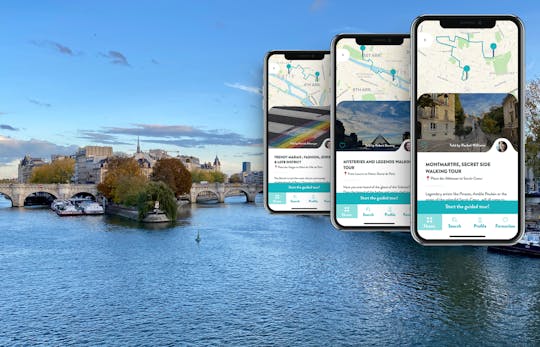 meropriyatiyaЛучшее в Париже, 3 audioguided туры на телефонеПосетить Монмартр, квартал Маре и окрестностях Лувра в своем собственном темпе и настроить свой маршрут, как вы хотите с аудио-гидом на вашем смартфоне!Продолжительность: 4 час30 минутаE-VoucherБесплатное аннулирование717,32 TL «Поскольку
meropriyatiyaЛучшее в Париже, 3 audioguided туры на телефонеПосетить Монмартр, квартал Маре и окрестностях Лувра в своем собственном темпе и настроить свой маршрут, как вы хотите с аудио-гидом на вашем смартфоне!Продолжительность: 4 час30 минутаE-VoucherБесплатное аннулирование717,32 TL «Поскольку -
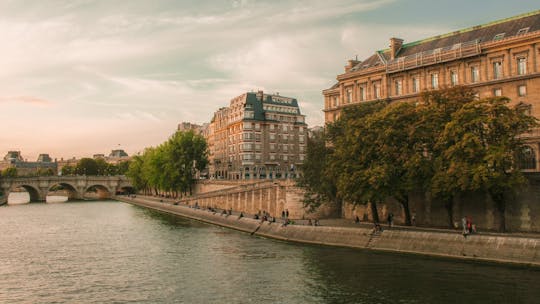 Достопримечательности и экскурсиHistoric Paris self-guided audio tourExplore Notre Dame, Sainte Chapelle, and the Louvre and delve into a variety of cultures and secret stories in Paris.Продолжительность: 2 часE-VoucherБесплатное аннулирование430,61 TL «Поскольку
Достопримечательности и экскурсиHistoric Paris self-guided audio tourExplore Notre Dame, Sainte Chapelle, and the Louvre and delve into a variety of cultures and secret stories in Paris.Продолжительность: 2 часE-VoucherБесплатное аннулирование430,61 TL «Поскольку -
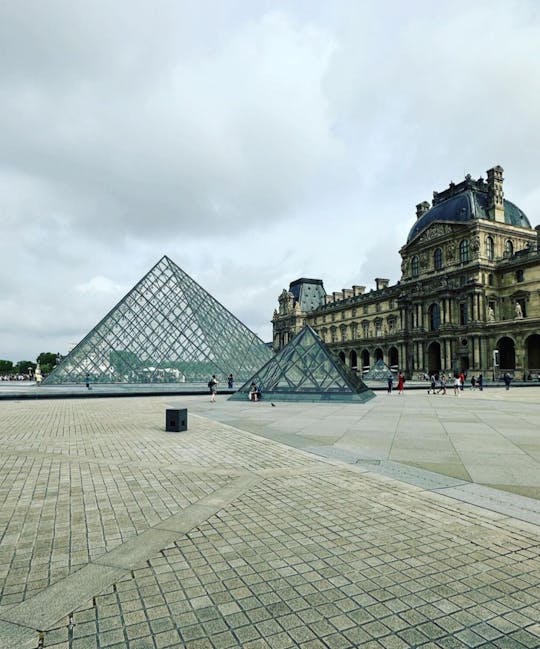 Достопримечательности и экскурсиLouvre Museum skip-the-line ticketEnhance your Louvre Museum visit with ease using a skip-the-line ticket, ensuring seamless access to iconic art and captivating historyПродолжительность: 24 часE-VoucherБесплатное аннулирование1 076,52 TL «Поскольку
Достопримечательности и экскурсиLouvre Museum skip-the-line ticketEnhance your Louvre Museum visit with ease using a skip-the-line ticket, ensuring seamless access to iconic art and captivating historyПродолжительность: 24 часE-VoucherБесплатное аннулирование1 076,52 TL «Поскольку -
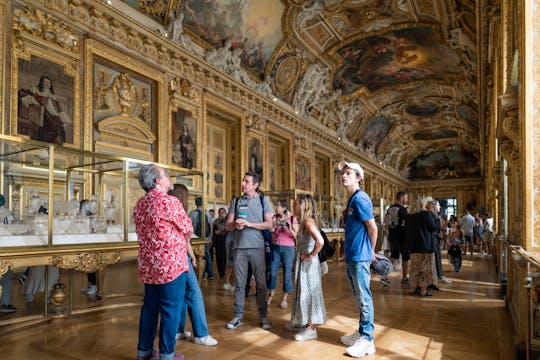 Достопримечательности и экскурсиОбязательно видит Лувра 1,5 часа экскурсияУвидеть некоторые из величайших произведений искусства в мире - расположен в крупнейший в мире музей - самый легкий способ возможно!Продолжительность: 1 час30 минутаE-VoucherБесплатное аннулирование2 472,41 TL «Поскольку
Достопримечательности и экскурсиОбязательно видит Лувра 1,5 часа экскурсияУвидеть некоторые из величайших произведений искусства в мире - расположен в крупнейший в мире музей - самый легкий способ возможно!Продолжительность: 1 час30 минутаE-VoucherБесплатное аннулирование2 472,41 TL «Поскольку -
 meropriyatiyaАудиотур по Парижу с самостоятельным гидомИсследуйте Париж в своем собственном темпе! Наслаждайтесь приложением, содержащим более 130 достопримечательностей, известные транспортные маршруты, экскурсионные маршруты и пешеходные экскурсии.Продолжительность: переменнаяE-VoucherБесплатное аннулирование358,84 TL «Поскольку
meropriyatiyaАудиотур по Парижу с самостоятельным гидомИсследуйте Париж в своем собственном темпе! Наслаждайтесь приложением, содержащим более 130 достопримечательностей, известные транспортные маршруты, экскурсионные маршруты и пешеходные экскурсии.Продолжительность: переменнаяE-VoucherБесплатное аннулирование358,84 TL «Поскольку -
 Достопримечательности и экскурсиЧастная экскурсия в ПарижУвидеть лучшее в Париже на 2 часа ознакомительный тур! Передвигаться пешком или на общественный транспорт, чтобы добраться вокруг, посмотреть достопримечательности и памятники, которые вы хотите видеть.Продолжительность: 2 часE-VoucherБесплатное аннулирование12 990,04 TL «Поскольку
Достопримечательности и экскурсиЧастная экскурсия в ПарижУвидеть лучшее в Париже на 2 часа ознакомительный тур! Передвигаться пешком или на общественный транспорт, чтобы добраться вокруг, посмотреть достопримечательности и памятники, которые вы хотите видеть.Продолжительность: 2 часE-VoucherБесплатное аннулирование12 990,04 TL «Поскольку -
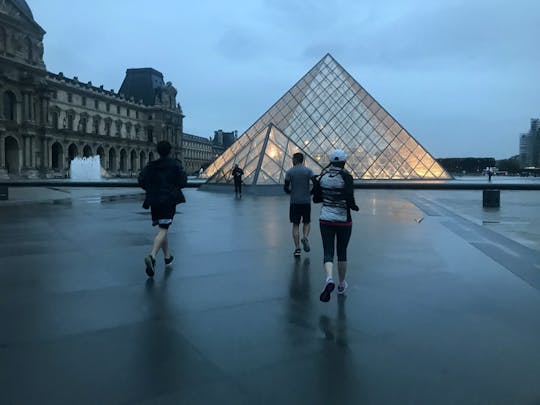 meropriyatiyaБег экскурсия ночной ПарижЗабронировать этот 2-часовой бег экскурсия ночной Париж и знакомства с освещенной улицы, мосты и памятники, которые заставят Париж заслуживает звания "Город Света".Продолжительность: 2 часE-VoucherБесплатное аннулирование1 399,48 TL «Поскольку
meropriyatiyaБег экскурсия ночной ПарижЗабронировать этот 2-часовой бег экскурсия ночной Париж и знакомства с освещенной улицы, мосты и памятники, которые заставят Париж заслуживает звания "Город Света".Продолжительность: 2 часE-VoucherБесплатное аннулирование1 399,48 TL «Поскольку -
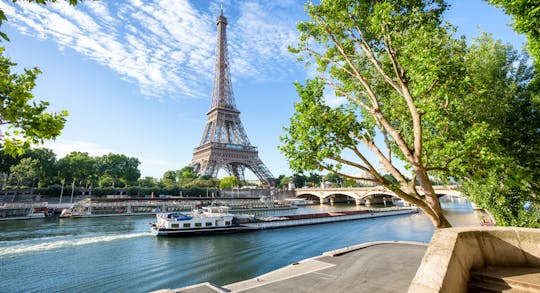 meropriyatiyaПариж вип тур круиз по реке СенаПолюбуйтесь на Париж самых знаковых памятников и церквей, доступ к Сент-Шапель и Лувр и панорамный круиз по Сене!Продолжительность: 8 час30 минутаE-VoucherБесплатное аннулирование8 935,14 TL «Поскольку
meropriyatiyaПариж вип тур круиз по реке СенаПолюбуйтесь на Париж самых знаковых памятников и церквей, доступ к Сент-Шапель и Лувр и панорамный круиз по Сене!Продолжительность: 8 час30 минутаE-VoucherБесплатное аннулирование8 935,14 TL «Поскольку -
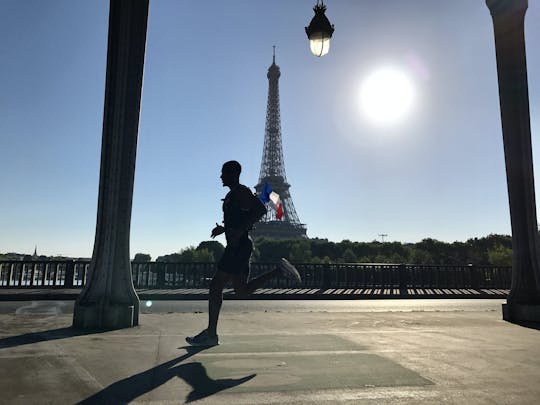 meropriyatiyaВосход и экскурсий бежать в ПарижКнига эта ранняя пробежка птицы увидеть и узнать о самых известных мест и достопримечательностей Парижа!Продолжительность: 2 часE-VoucherБесплатное аннулирование1 363,60 TL «Поскольку
meropriyatiyaВосход и экскурсий бежать в ПарижКнига эта ранняя пробежка птицы увидеть и узнать о самых известных мест и достопримечательностей Парижа!Продолжительность: 2 часE-VoucherБесплатное аннулирование1 363,60 TL «Поскольку -
 Пешие турыSmall group tour of top Paris attractions with a localCome across the most wonderful sights of Paris with a local guide and get a feel of its unique culture.Продолжительность: 1 час30 минутаE-VoucherБесплатное аннулирование2 807,21 TL «Поскольку
Пешие турыSmall group tour of top Paris attractions with a localCome across the most wonderful sights of Paris with a local guide and get a feel of its unique culture.Продолжительность: 1 час30 минутаE-VoucherБесплатное аннулирование2 807,21 TL «Поскольку -
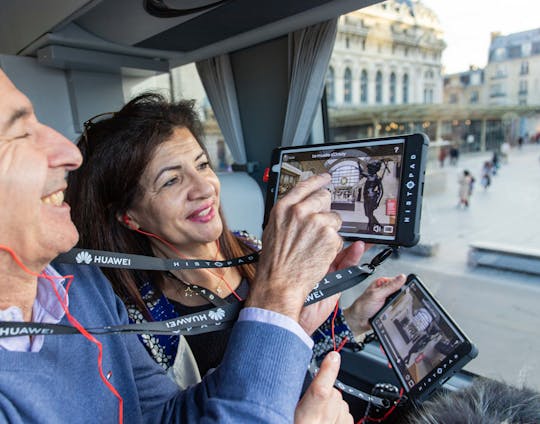 meropriyatiyaОбзорная экскурсия по Парижу на автобусе и билеты на круиз по СенеЗабронируйте это предложение, включающее экскурсию по Парижу на автобусе и 1-часовой обзорный круиз по реке Сена.Продолжительность: 2 час30 минутаE-VoucherБесплатное аннулирование1 399,48 TL «Поскольку
meropriyatiyaОбзорная экскурсия по Парижу на автобусе и билеты на круиз по СенеЗабронируйте это предложение, включающее экскурсию по Парижу на автобусе и 1-часовой обзорный круиз по реке Сена.Продолжительность: 2 час30 минутаE-VoucherБесплатное аннулирование1 399,48 TL «Поскольку -
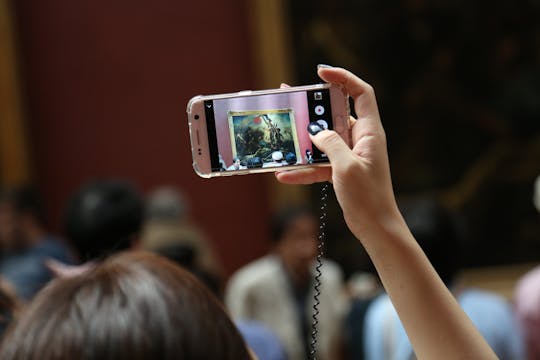 Достопримечательности и экскурсиSemi-private Louvre tour with Mona Lisa and Royal PalaceMake the most of your time at the Louvre with no lines, an enthusiastic guide, headsets to make sure you don't miss a word and a small group of 10 or fewer.Продолжительность: 3 часE-VoucherБесплатное аннулирование3 373,11 TL «Поскольку
Достопримечательности и экскурсиSemi-private Louvre tour with Mona Lisa and Royal PalaceMake the most of your time at the Louvre with no lines, an enthusiastic guide, headsets to make sure you don't miss a word and a small group of 10 or fewer.Продолжительность: 3 часE-VoucherБесплатное аннулирование3 373,11 TL «Поскольку -
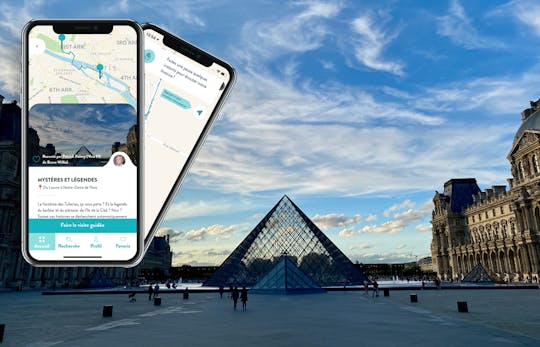 Gorodskiye meropriyatiyaАудио-экскурсия с гидом по Сене и экскурсия в виртуальной реальности по Нотр-ДамуЗакажите этот комбинированный опыт, включающий экскурсию с аудиогидом на вашем смартфоне от Лувра до собора Парижской Богоматери и полет в виртуальной реальности над собором Парижской Богоматери!Продолжительность: переменнаяE-VoucherБесплатное аннулирование968,51 TL «Поскольку
Gorodskiye meropriyatiyaАудио-экскурсия с гидом по Сене и экскурсия в виртуальной реальности по Нотр-ДамуЗакажите этот комбинированный опыт, включающий экскурсию с аудиогидом на вашем смартфоне от Лувра до собора Парижской Богоматери и полет в виртуальной реальности над собором Парижской Богоматери!Продолжительность: переменнаяE-VoucherБесплатное аннулирование968,51 TL «Поскольку -
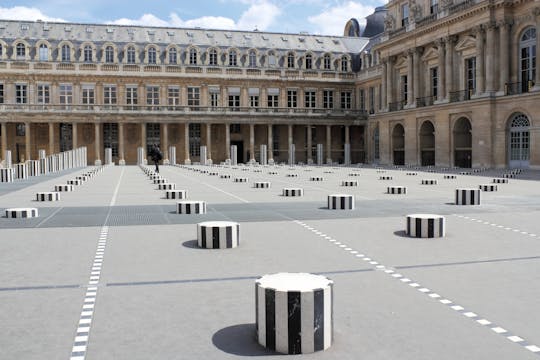 Достопримечательности и экскурсиЧастная тематическая экскурсия неоклассической ПарижЗабронировать этот частный 2-х часовая экскурсия и узнать, как Париж превратился из средневекового города в мегаполис, который стал одним из самых важных столиц ЕвропыПродолжительность: 2 часE-VoucherБесплатное аннулирование7 176,82 TL «Поскольку
Достопримечательности и экскурсиЧастная тематическая экскурсия неоклассической ПарижЗабронировать этот частный 2-х часовая экскурсия и узнать, как Париж превратился из средневекового города в мегаполис, который стал одним из самых важных столиц ЕвропыПродолжительность: 2 часE-VoucherБесплатное аннулирование7 176,82 TL «Поскольку

